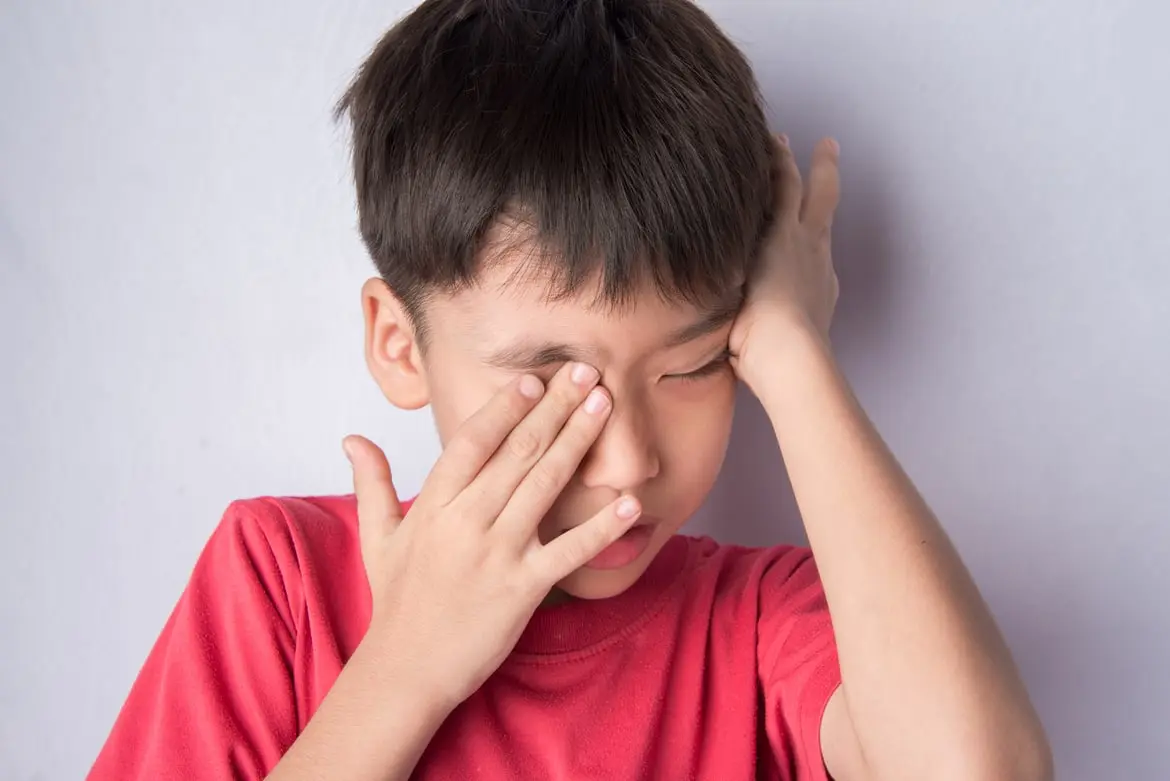What is eczema?
Eczema is the name of a group of conditions that can cause the skin to become red, itchy and inflamed.
There are several types of eczema. The common types to affect infants and children are:
- Atopic dermatitis
- Contact dermatitis
- Dyshidrotic eczema (foot-and-hand eczema)
- Seborrheic dermatitis (also known as "cradle cap")
Eczema often appears in the first 6 months to 5 years of a child's life. It is not a contagious condition. There is currently no cure for eczema but many treatments are available to manage the symptoms.
Symptoms of eczema in children
Eczema manifestations may evolve as your child grows older. It usually starts on the face – cheeks and forehead and scalp and as an infant begins to crawl, rashes typically develop on the elbows and knees. As the child grows, eczema may begin to appear drier, scalier and thicker and can affect their arms and legs.
Talk to your doctor to find out what is the type of eczema your child has so you can help manage their symptoms and triggers better.
Infants (0 – 6 months)
Eczema in infants usually appears on the cheeks, chin, forehead and scalp. It can also spread to other areas of the body, but not usually the diaper area. It may appear as red rashes that may ooze fluid or look wet.
Babies (6 – 12 months)
Eczema in babies often appears on their elbows and knees, places that are more likely to be scratched or rubbed as they are crawling. If the eczema rash becomes infected, it may form a yellow crust or very small bumps filled with pus on the skin.
Toddlers (2 – 5 years)
Eczema in toddlers is more likely to appear in the creases of the elbow and knees, or on their wrists, ankles and hands. It may also appear on the skin around their mouth and eyelids.
Skin may start to look dry and scaly and become thick with deeper lines.
Toddlers may also have atopic dermatitis on their face that appears as red patches with small bumps.
Children (5 years+)
In children, eczema usually appears in the folds of the elbows and/or knees. Sometimes it may only be on their hands.
If you notice redness and itchy patches behind your child's ears, on their feet or scalp, this may be a sign of atopic dermatitis or seborrheic dermatitis.
What causes eczema?
The exact cause of eczema is still not known, but researchers believe that it is probably due to a combination of genetic and environmental factors that causes a dysfunction in the immune system.
Infants are more likely to develop eczema if family members have a history of eczema, hay fever or asthma.
Common triggers for eczema include:
- Dry skin
- Irritants
- Heat and sweating
- Skin infections
- Allergens, such as certain foods, pet dander, pollen or dust
- Saliva from drool
How to treat eczema
Eczema treatment focuses on managing skin dryness to prevent flare-ups and on reducing inflammation.
Treatments include:
- The "Soak and Seal" method involving bathing with a gentle cleanser and moisturising to lock water into the skin
- Bleach baths with the addition of bleach into bath water similar to the concentration of bleach in a chlorinated swimming pool
- Wet wrap therapy to soothe flares and itch
- Over-the-counter remedies, such as mild corticosteroids, moisturisers and petroleum jelly
- Topical medications including corticosteroids, calcineurin inhibitors and PDE4 inhibitors
- Antibiotic, antiviral or antifungal drugs for skin infections
- Oral medications that suppress the immune system for moderate-to-severe cases of eczema
5 tips for managing eczema
Tip 1: Caring for your child's skin
Pick a gentle soap-free cleanser for bathing
Pick a gentle fragrance-free non-soap based cleanser to minimise aggravation to the skin when cleansing. Avoid prolonged baths or soaking in the tub.
Moisturise the skin liberally
Apply fragrance- and additive-free moisturiser at least twice a day, immediately after baths as baths are drying to the skin and right before bedtime so that the skin is kept moist and itching can be reduced during sleep.
Avoid irritants
Products with fragrances, parabens and multiple additives may further irritate your child's skin so read all labels carefully and avoid putting such products on your child's skin.
Dealing with skin infections
To prevent skin infections, use antiseptic washes during eczema flare-ups.
You can bring your child to the swimming pool for a more "fun" antiseptic treatment as the chorine in the water helps to keep the skin clean. After swimming, wash off excess chlorine at the poolside and moisturise liberally.
When steroids are needed
You should aim to control your child's eczema so you don't have to depend on steroids. However, sometimes this can't be helped and your doctor may recommend a short course of steroid creams to bring the condition under control. As prolonged or incorrect use of these creams can cause the skin to redden and thin, always follow the doctor's prescription and guidelines.
Tip 2: Choose suitable clothing
Choose cotton or cotton-blend clothing for your child.
Avoid synthetic materials as these do not allow the skin to breathe and will cause sweating and irritation.
Pick liquid detergents over powders when washing clothing.
Tip 3: Food and other allergens
If you suspect a food allergy, it is important to consult an allergy specialist to do a skin prick test or blood test.
Avoid removing multiple foods from your child's diet as most aren't causing true allergies. By eliminating multiple foods from your child’s diet, they may end up not getting a balanced diet.
In young babies, it is not advised to apply creams or lotions with food grade ingredients such as oat and coconut etc. to the skin as there is increasing evidence that topical application of food grade ingredients prior to oral dietary exposure could lead to the development of true food allergies.
Take precautions to reduce dust mite load at home by keeping the environment clean for older children.
Tip 4: Vitamin supplementation
There is some evidence that vitamin D and vitamin E supplementation (at 1000IU/day and 400IU/day respectively) in children with eczema may help reduce the extent and severity of eczema.
Tip 5: Managing school and sports activities
Let teachers know of your child's need to shower after the activity.
Just be sure that the teachers know that your child should take a shower or use a moist towel to wipe off sweat immediately afterwards as this can irritate the skin.
Make the teachers aware of the needed cleaning and moisturising routine and that your child should be allowed to change into fresh dry clothes.
Although frustrating, eczema can be well controlled with proper treatment and care. Seek help early and begin taking steps to help your child better manage the condition.
Struggling to contain and manage your child's flare-ups at home? Find out more about wet wrap therapy and how it can treat and soothe your child's more severe flare-ups.












